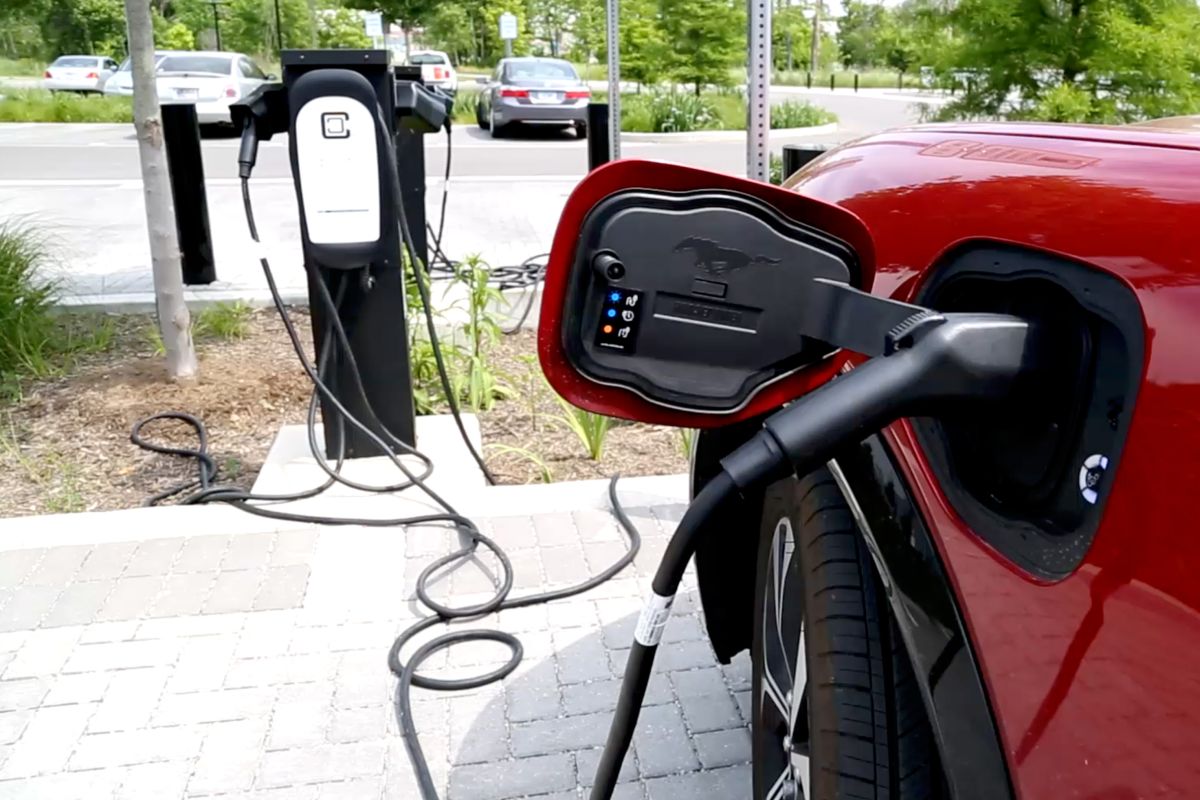
People will now need to pay 35 cents per kilowatt-hour to charge their electric vehicle at Switchyard Park. (WTIU / WFIU News)
Electric vehicles are struggling to gain traction in Indiana. The culprit? Lack of infrastructure.
State electric vehicle sales account for about 4.5 percent of new vehicle sales, increasing approximately 3.6 percent in the last year. Regardless, Indiana is still falling behind the rest of the country in developing adequate infrastructure, such as more charging stations along highways.
Eve Brendel leased a Hyundai Ioniq about six months ago. She opted for a lease instead of purchase because maintenance costs were lower, and it came with a three-year warranty.

“I was driving a very large SUV,” she said. “And I didn't want to have a real gas guzzler.”
Hyundai also provided a home charging station, which Brendel said makes it easier to charge her car overnight. It takes about six hours to charge her car fully. Even though she does not charge her car around town, she thinks more should be done to make charging more accessible, especially on highways.
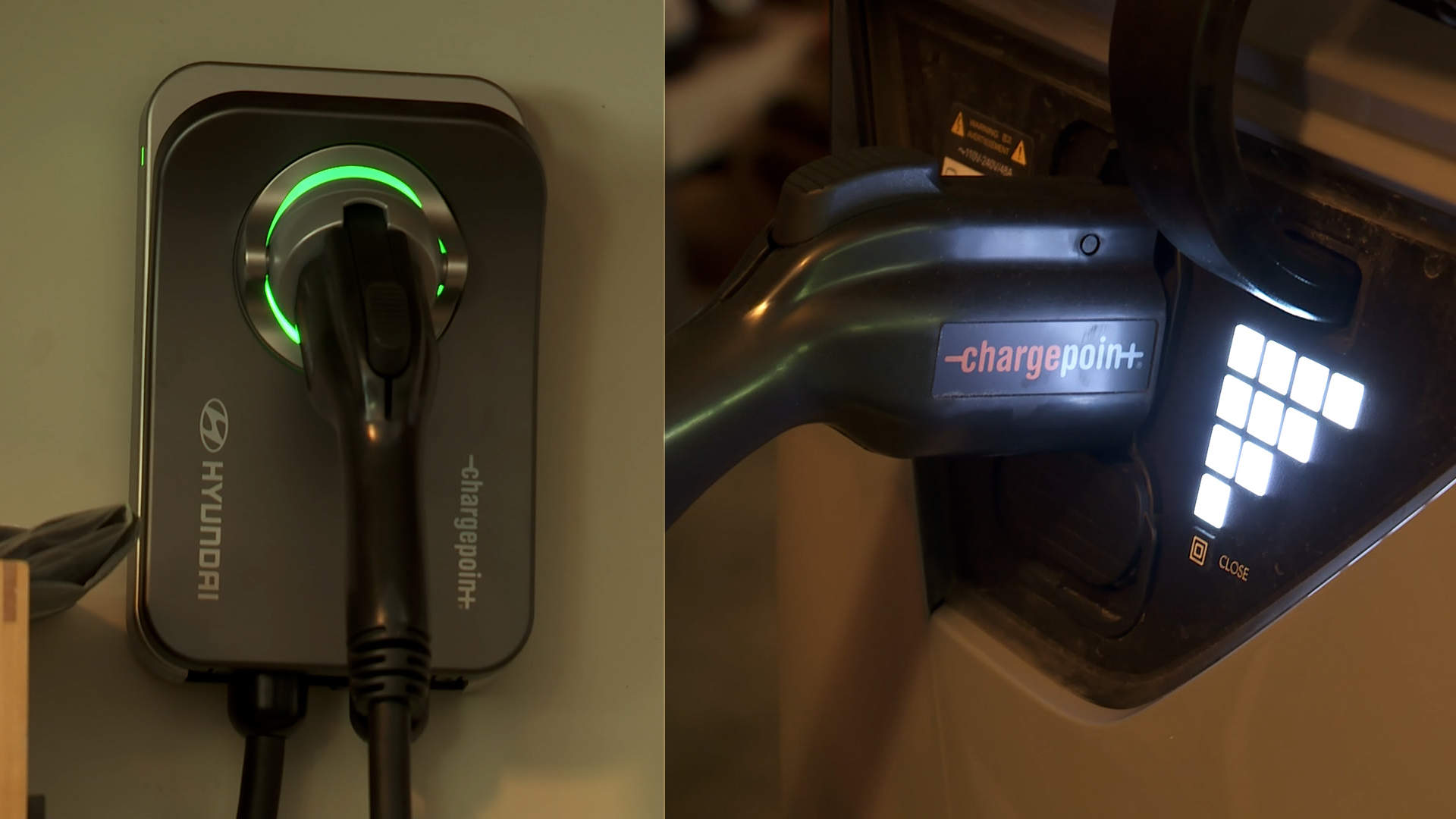
“I haven't taken a road trip yet…I might just rent a car still,” she said. “I do think that that in the Midwest is something that might be a little bit less convenient. You wouldn't just say, ‘hey, I'm tired. I'm on my way to the East Coast, I'm just going to pull over and Pennsylvania get some gas.’ You probably need to plan better.”
This past winter, Brendel drove to Indianapolis with an 80 percent charge. Due to the cold, she only had 40 percent when she had to drive back. She’d tried to go to a nearby charging station, but the charger was broken.
“I was able to drive home and I ended up home and I think I still had 30 miles or 10 percent charge on it,” she said. “But it was nerve racking.”
Brendel thinks electric vehicle sales are slow, not just because of lack of infrastructure, but also because they are more expensive and very technology-driven.
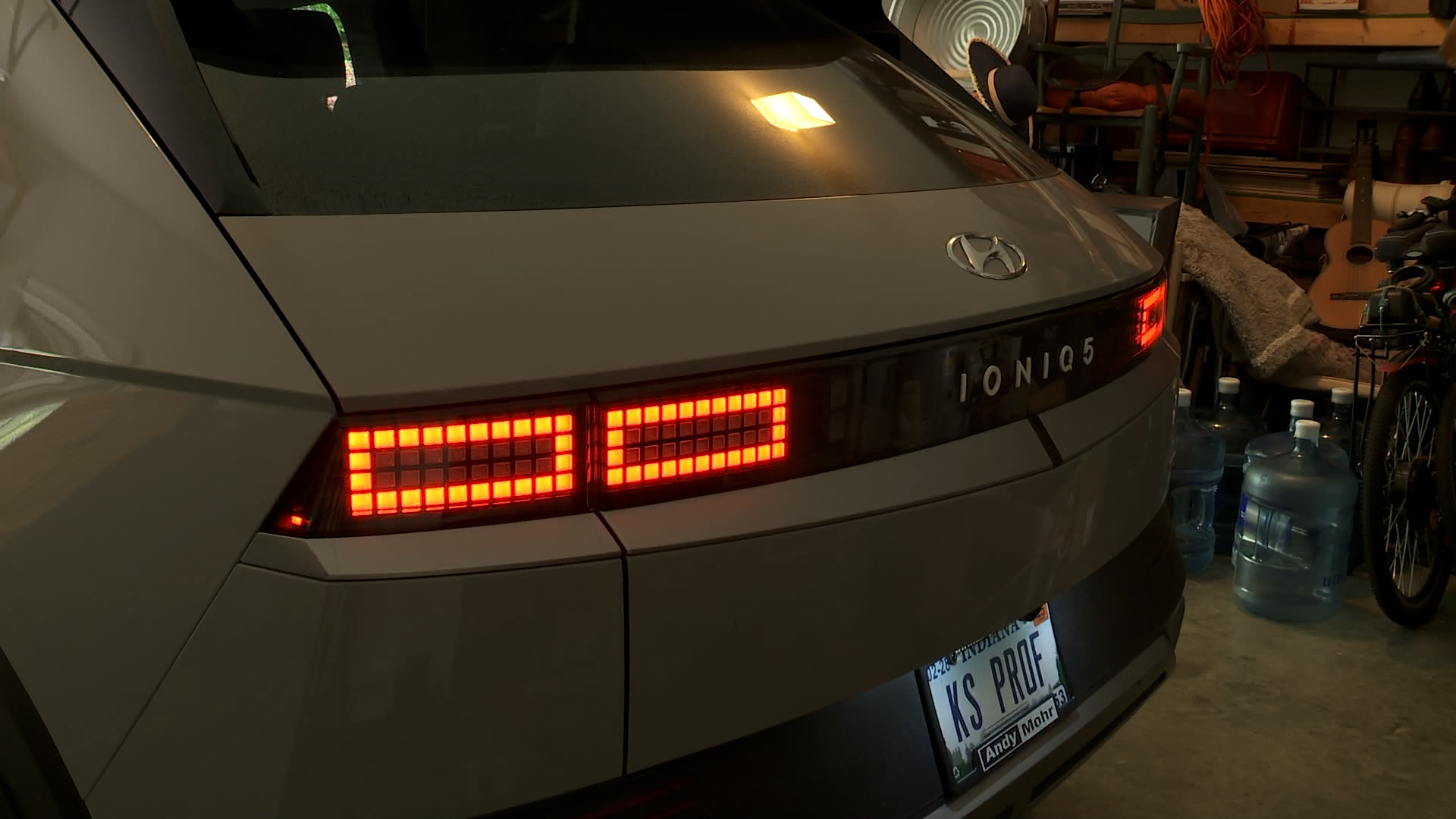
“This car has so much technology that I'm pretty sure I only understand about maybe 50 percent of it,” she said. “It's still to the point where if I don't understand how to do something, [like] change my settings, I need to go to the dealership and ask someone to help me.”
Rish Naran, executive general manager for Andy Mohr Honda and Hyundai in Bloomington, said electric vehicle sales have slowed down significantly in the last few years in the Midwest due to infrastructure limits. Fewer charging stations are available in the Midwest than on the west coast, where electric vehicles are much more popular.
“Most of the car manufacturers started the electrics on the east and west coast and then moved into Texas, which are more battery electric vehicle friendly states versus Midwest,” he said. “Public perception has not really changed towards saying, ‘I'm okay with the charging range. I'm okay driving to southern Indiana, northern Indiana, and knowing that I'm going to be able to get back.’”

Read more: How did Indiana come up with the fee to register electric vehicles?
But one research team based out of Purdue has an idea to add to the infrastructure conversation. What if the roads that we drive on were able to maintain or increase the charge levels of EVs wirelessly, similar to how some phones do it?
Aaron Brovont, research assistant professor in electrical and computer engineering at Purdue University, said Purdue has been working with the Indiana Department of Transportation to develop a stretch of road on U.S. Highway 231/52 that would charge electric heavy-duty trucks and semis as they drive over it. The plan is to install cables under the concrete road that could transfer power to receiver coils underneath electric vehicles.
“The power that's being transferred from the roadway to the receiver is for charge sustaining,” he said. “We're not actually looking to charge the batteries of heavy-duty vehicles. So, they will need enough battery on board to be able to get to the electrified roadway, and then get off of the electrified roadway to their final destination.”
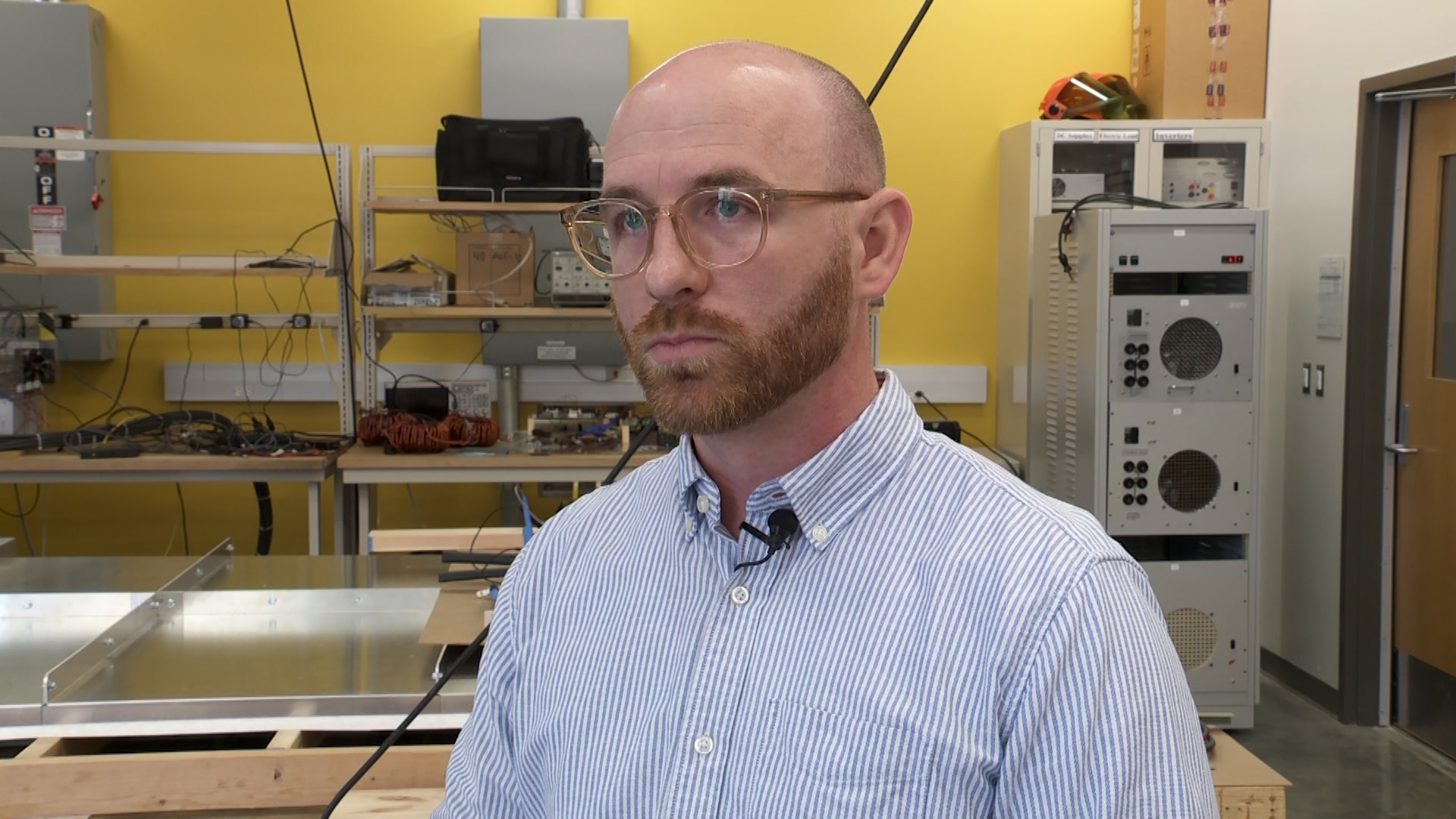
The focus is on heavy-duty trucks and semis because the batteries needed to operate them are incredibly large and resource intensive to produce. If the roadway can maintain the charge of a truck, it can carry a smaller battery and have more room to transfer more goods, Brovont said.
Critics against electrifying our vehicles have often pointed to the lack of infrastructure as a symptom of our electrical grids not being able to support all the new charging stations. Brovont said this system would be an improvement in that regard over charging stations because the energy is more evenly distributed over a wider swath of land, causing less overall drain on the grid.
“This paradigm of roadway electrification is actually, in my opinion, easier than the idea of just replacing the gas station model with electric charging stations,” he said. “That was going to require much more power and a much smaller area that has to be delivered there.”
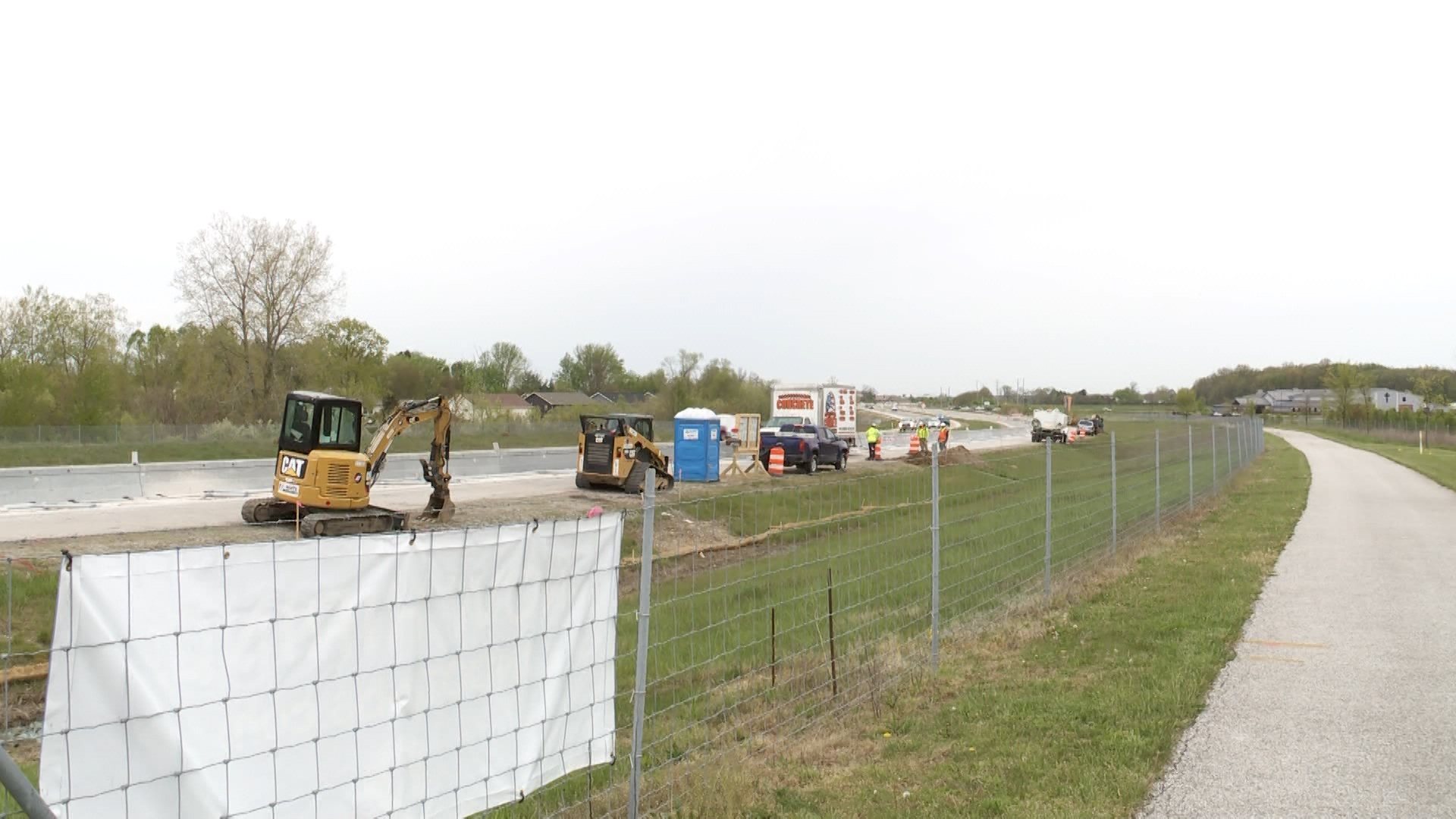
This project has the potential to transform the interstate system in the next few decades and make it more electricity based. Yet years of experimentation remain to prove this concept will actually work. Car manufacturers would have to get on board as well and build the needed coils into the underside of their vehicles in order to interface with the road system.
“If we are able to electrify the interstate system, you can get on the Interstate in New York, and drive west, and you wouldn't have to get off until you either biologically felt like you needed to, or until you want to,” he said. “There's just no other system like that…the limitations are the humans, not the cars.”
Read more: New dashboard shows increasing number of electric, hybrid vehicles registered in Indiana
Hyundai in Bloomington used to sell an average of 10 electric cars within a 30-day period. Now, that has slowed to an average of 10 sales within a 60-day period.
It is up to manufacturers to produce electric vehicles that are more affordable, Naran said. However, car companies such as Hyundai and Subaru are offering two-year leases for electric vehicles; the lease includes a $7,500 federal tax credit. The price of most of Hyundai’s electric vehicles fall between $40,000 and $60,000.
Honda’s first electric vehicle will be released in the Midwest in the next month and will cost between $40,000 and $45,000. Honda recently ended a collaboration with General Motors to create cheaper electric vehicles.
“Honda put a lot of money into their own development,” Naran said. “They ended the collaboration with GM. The former CEO of North America [is] running the electrification, strategy and development of their own battery. We were in full force and investing in ourselves to try and come up with a good solution.”
Hybrid vehicles have the highest demand, Naran said. Around 50 percent of customers at Andy Mohr are looking to buy a type of hybrid SUV. From 2021 to 2023, Honda has seen a 130 percent increase in car sales, including a 60 percent increase in hybrid vehicle sales and a 40 percent increase in gas vehicle sales. From 2021 to 2023, Hyundai saw an approximate 110 percent increase in car sales, the majority being in hybrid vehicles. Between 2018 and 2024, 2,428 electric vehicles were registered in Monroe County.
“You're seeing car sales go back up, partly because of the rising inventory levels, he said. “During the pandemic, there were very low levels and very high pricing, so it kept a lot of the buyers out of the market. Now that demand is coming back, interest rates from the manufacturers are lower, we're starting to see the demand for the product go up.”
Naran said consumer education will be key in increasing electric vehicle sales. Bloomington is a more electric vehicle and environmentally-friendly community, with a few charging stations in town, including Switchyard Park.
Read more: Bloomington swapping out free EV charging stations at Switchyard Park with metered ones
Hyundai and Honda owners will receive adaptors in 2025 to charge their cars on Tesla’s charging network.
“Being able to charge on different charging systems has become much more acceptable,” he said. “Manufacturers are collaborating and hopefully the collaboration will help bring down the pricing of these vehicles.”
In the fourth quarter of 2023, approximately 377,000 electric vehicles were sold throughout the country, a 34 percent increase from the fourth quarter of 2022. On average, over 4.3 million electric vehicles are driven, accounting for over one percent of the total vehicles in operation. However, only 159,842 charging outlets are publicly available nationwide, which amounts to 27 electric vehicles for every charger.
California accounts for 25.7 percent of total electric vehicle sales in 2023, the District of Columbia accounts for 19.6 percent and Oregon accounts for 15.4 percent.
To meet the National Renewable Energy Laboratory’s recommendation for 2030, approximately 1.1 million more public chargers should be installed. This means that 437 chargers would need to be installed every day for the next 7 years to meet this goal.
Clayton Baumgarth contributed to this report.











